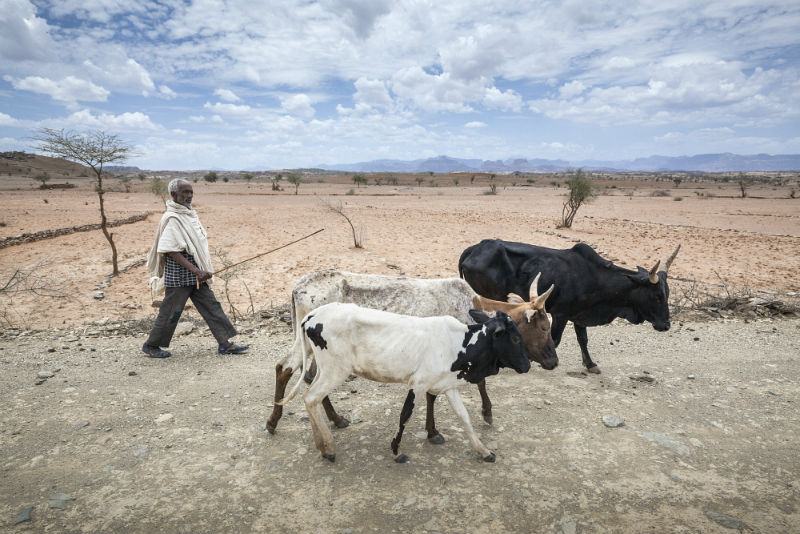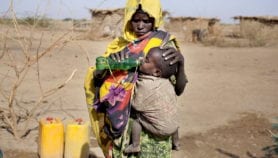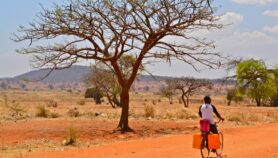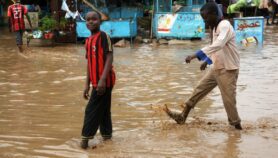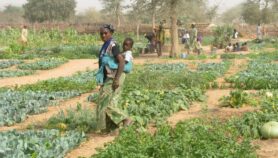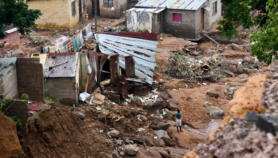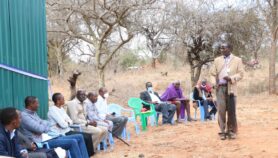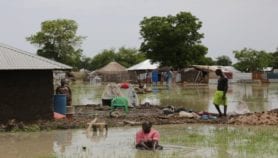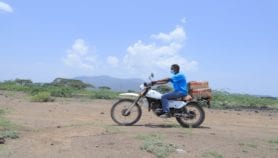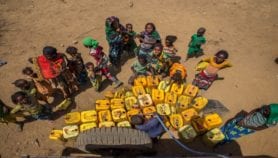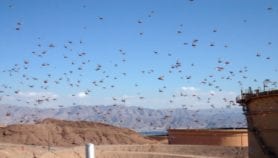By: Esther Ngumbi
Send to a friend
The details you provide on this page will not be used to send unsolicited email, and will not be sold to a 3rd party. See privacy policy.
It is time to use historical data to predict drought in Africa to benefit farmers, writes Esther Ngumbi.
The scorching heat of Kenya’s south coast is causing nightmares to many farmers. Just two months ago, after the rains arrived, Kenya’s south coast was lush with green scenery. The maize fields were thriving and the tomatoes and bell peppers were flourishing. Farmers were happy and looking forward to a bumper harvest.
Today, however, the green is gone, the maize is withered and the situation is grim. A drought is looming. Even the drought-tolerant crops such as Syngenta’s Kilele F1 tomato variety and amaranth greens are being affected by the extreme heat. The farmers are asking themselves hard questions about what they could have done differently to avoid losing their crops.
The farmers at the Kenyan south coast are not alone. Drought is ravaging crops and destroying harvests in countries across Africa and Asia [1]. In Malawi, as many as 6.5 million people are in dire need of food aid as a result. According to the World Food Programme, the number of people expected to need food aid by the end of the year in southern Africa alone is 14.1 million. [2]
“The farmers are asking themselves hard questions about what they could have done differently to avoid losing their crops.”
Esther Ngumbi
Where are we failing? What can farmers, governments, and non-governmental organisations do differently to cope with recurring droughts, and ultimately mitigate the effects of climate change?
Measures against drought
Many countries are already taking active measures to cope with drought. For instance, the government Kenya has established a National Drought Management Authority — a specialised institution to ensure coordinated, high-quality interventions and generate credible early warning information. [3] In Malawi, the government has implemented disaster forecasting and risk modelling measures — efforts aimed at reducing the impact of drought and other natural disasters. [4]
At the same time, there are increasing collaborations to promote so-called “climate-smart” agriculture that can improve farmers’ resilience to climate change over the long term.
In my hometown of Mabafweni in Kwale County on the Kenyan coast, my brother and our neighbours are planting amaranth greens — a drought-tolerant crop. Many smallholder farmers have also diversified their crops in hopes that some of the crops will survive. Also, smallholder farmers are using mobile phone-based technology to obtain weather data, helping them to sow, fertilise and harvest crops at the optimum time.
Predicting drought
Yet, even with such changes, farmers still feel the dire consequences of drought and a changing climate. But one underutilised strategy could serve them well.
It is predictive data: using historical data to predict the future. Sophisticated algorithms and statistical techniques such as machine learning and predictive modelling come into play to analyse data related to rainfall patterns, land temperature and other factors.
Predictive data analysis could help determine where drought, floods and other impacts of climate change are most likely to happen, enabling governments and their partners to prepare and mitigate the impacts of the predicted disasters on vulnerable populations.
“Predictive data analysis could help determine where drought, floods and other impacts of climate change are most likely to happen.”
Esther Ngumbi
Such actions can range from providing food aid where needed to executing water conservation programmes and other drought-coping strategies. Early warning can be sent to farmers and others to help them prepare.
Such efforts are beginning. In early 2015, scientists with the Climate Hazards Group at the University of California-Santa Barbara in the United States developed and released the CHIRPS (Climate Hazards Group InfraRed Precipitation with Station) dataset. It combines data from weather stations and satellites to provide a detailed record of global rainfall stretching back more than 30 years.
Soon after the release of the CHIRPS dataset, the Famine Early Warning Systems Network used the data to identify countries where huge rainfall deficits were expected. These countries included Ethiopia, Nigeria and Haiti. The UN secretary-general then visited Ethiopia to draw global attention to the looming crisis. [5] In addition, organizations such as OXFAM responded and began distributing food aid while advocating for more support.
Benefits of predictive data
We also know that early response can save millions of dollars. For example, it’s estimated that early intervention and resilience building efforts in Niger would cost US$375 million less than a late humanitarian response to drought. In Mozambique, such proactive efforts would save US$844 million. [6] By providing timely information based on predictive data, we can reduce risks and better prepare for effective response and early interventions.
Of course, the use of predictive data is not a silver bullet. We must continue other urgent measures including development sustainable irrigation and water harvesting schemes, cultivating more drought-tolerant crop varieties, expanding crop insurance, and establishing alternative livelihoods that can be a source of income in drought-prone areas. Combined, these proactive measures could save the lives and livelihoods of millions of people.Predictive data looks back in time to help us prepare for the future. We cannot turn back the clock on climate change, but as Nelson Mandela once said, “We must use time wisely and forever realise that the time is always ripe to do right.”
The time is ripe. Taking proactive action against drought is the right thing to do.
Esther Ngumbi is a postdoctoral researcher at the Department of Entomology and Plant Pathology at Auburn University in Alabama, United States. She serves as a 2015 Clinton Global University (CGI U) Mentor for Agriculture and is a 2015 New Voices Fellow at the Aspen Institute. She can be contacted at [email protected]
This piece was produced by SciDev.Net’s Sub-Saharan Africa English desk.
References
[1] Ann M. Simmons Hunger stalks southern Africa as drought dries up food supply (LA Times, 25 July 2016)
[2] WFP begins unprecedented emergency food relief operation in drought-hit Malawi (World Food Programme, 20 July 2016)
[3] Programming framework to end drought emergencies in the Horn of Africa: Ending drought emergencies in Kenya (Government of Kenya, August 2012)
[4] Chris Funk and others The climate hazards infrared precipitation with stations — a new environmental record for monitoring extremes (Nature, 8 December 2015)
[5] Visiting drought-hit region of Ethiopia, ban urges support to government-led humanitarian efforts (UN News Centre, 31 January 2016)
[6]. The economics of early response and resilience series (UK Department for International Development, 2013)


